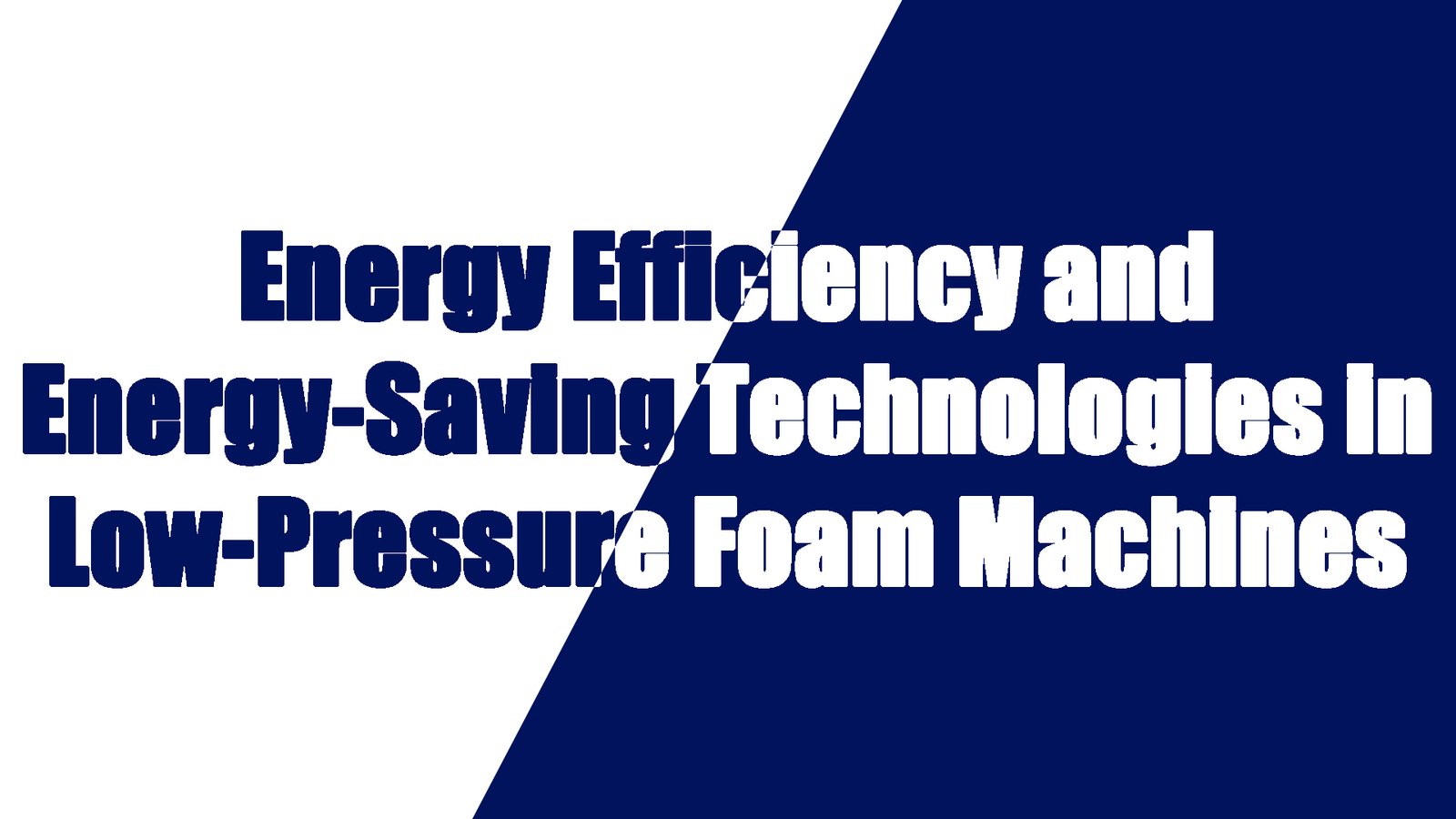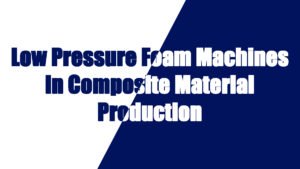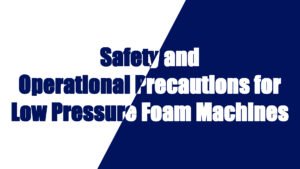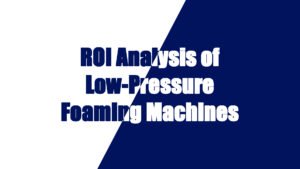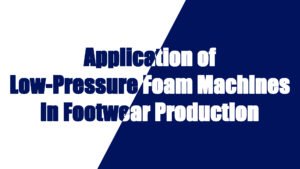Low-pressure foam machines are widely used in various industries such as furniture, automotive, and construction. As energy consumption increases and environmental pressures grow, improving the energy efficiency of equipment and reducing energy waste have become critical concerns for businesses. The design and technology of low-pressure foam machines have continuously evolved, optimizing energy usage efficiency while reducing production costs and environmental impact.
Energy Efficiency Optimization in Low-Pressure Foam Machines
Precise Metering and Spray Control
One of the core advantages of low-pressure foam machines is their precise metering system. Through advanced metering technology, the accurate ratio and mixing of raw materials (such as polyols and isocyanates) can be ensured, avoiding excessive raw material waste. This precise metering not only reduces raw material waste but also significantly lowers energy consumption. For example, through flow sensors and automated control systems, low-pressure foam machines can intelligently adjust the spray volume to ensure optimal results for each foaming operation while reducing emissions and raw material overuse.
Efficient Heating System
Low-pressure foam machines are often equipped with efficient heating systems to rapidly bring the raw materials to the required temperature. By utilizing electric heating or heat exchange technologies, low-pressure foam machines can achieve efficient thermal energy utilization, reducing energy waste. Through efficient temperature control systems, the machine can quickly heat the materials to the necessary temperature while maintaining stable conditions, preventing overheating or uneven heating. This design not only improves foaming efficiency but also reduces energy usage.
Energy-Saving Pumps and Drive Systems
The pump systems in low-pressure foam machines typically adopt energy-efficient pumps and drive systems that can be adjusted according to production needs. By using variable frequency drive (VFD) technology, low-pressure foam machines can adjust the pump speed based on load demands, avoiding unnecessary energy consumption. This technology not only reduces electrical consumption but also extends the lifespan of the equipment, minimizing the wear caused by overload operation.
Advantages of Low-Pressure Foam Machines in Reducing Energy Waste
Reducing Raw Material Waste
Low-pressure foam machines can precisely control the amount of raw materials injected into the system, ensuring optimal utilization. Compared to traditional manual spraying methods or high-pressure foam machines, low-pressure foam machines can adjust the foaming process with greater accuracy, thereby avoiding excessive raw material waste. For example, in the production of mattresses, sofas, and other flexible foam products, low-pressure foam machines can fine-tune foaming speed and pressure to ensure uniform foam density and shape, thus minimizing excess material and energy consumption.
Efficient Foam Control
Low-pressure foam machines are equipped with intelligent control systems that can adjust pressure, temperature, and spray rate in real-time during the foaming process, ensuring more uniform foam quality and reducing the production of defective products. By optimizing the foaming process, foam machines help to prevent problems such as uneven foam or overly large air pockets, ultimately reducing raw material waste and energy consumption.
Saving Energy Consumption
Compared to high-pressure foam machines, low-pressure foam machines operate at lower pressures, resulting in less energy required during production. The electrical and gas consumption of low-pressure foam machines is lower, making them ideal for small- to medium-scale production. In certain applications that require precise foaming, low-pressure foam machines further optimize the production process and save energy. For example, in the production of car seats, low-pressure foam machines can adjust the foaming speed and foam density based on different production needs, reducing material and energy consumption.
Case Studies of Energy-Saving Applications in Low-Pressure Foam Machines
Furniture Industry
In the furniture industry, low-pressure foam machines are primarily used to produce mattresses, sofa cushions, and soft seating pads. With precise raw material metering and temperature control systems, low-pressure foam machines can maximize material utilization and improve foaming quality. For instance, in mattress production, low-pressure foam machines can precisely control the foam hardness and density required for each mattress, ensuring consistent product quality and minimizing the need for rework and waste.
Automotive Industry
Low-pressure foam machines are widely used in the automotive industry, particularly in the production of car seats and interior components. The foam materials for seat cushions and car interior trim require specific densities and elasticity to provide better comfort and durability. Low-pressure foam machines can precisely control the foam density and hardness, reducing defective products, minimizing material waste, and improving production efficiency. For example, intelligent foam control systems in low-pressure foam machines can adjust foam speed and pressure in real-time to ensure that each seat meets the necessary foaming quality standards.
Construction Industry
In the construction industry, low-pressure foam machines are used to produce insulation materials. By precisely controlling foam density and uniformity, low-pressure foam machines can manufacture high-performance foams, such as those used for wall, roof, and floor insulation boards. Since low-pressure foam machines efficiently utilize raw materials, they reduce material waste in insulation production and improve the performance and insulation effects of the final products.
Future Development Trends
With ongoing technological advancements and increasingly stringent environmental regulations, energy-saving technologies in low-pressure foam machines will continue to evolve. In the future, low-pressure foam machines will increasingly incorporate Internet of Things (IoT) technologies, enabling real-time monitoring and data analysis to optimize energy efficiency. The machines will automatically adjust operating parameters based on real-time data, achieving optimal energy performance and minimal energy consumption.
Furthermore, with the growing use of eco-friendly blowing agents (such as cyclopentane and CO2-based agents), low-pressure foam machines will further improve in terms of compatibility with sustainable materials. Eco-friendly blowing agents not only reduce environmental impact but also help businesses reduce raw material and energy consumption during production, leading to better overall production efficiency.
Energy efficiency and energy-saving technologies in low-pressure foam machines offer significant economic and environmental benefits across various industries. By employing precise raw material metering, intelligent temperature control systems, and energy-efficient pumps and drive technologies, low-pressure foam machines can enhance production efficiency, lower energy consumption, and reduce material waste. As energy-saving technologies continue to innovate and environmental requirements intensify, low-pressure foam machines will play an increasingly important role in achieving sustainable production, helping businesses reduce costs and improve environmental impact.


















